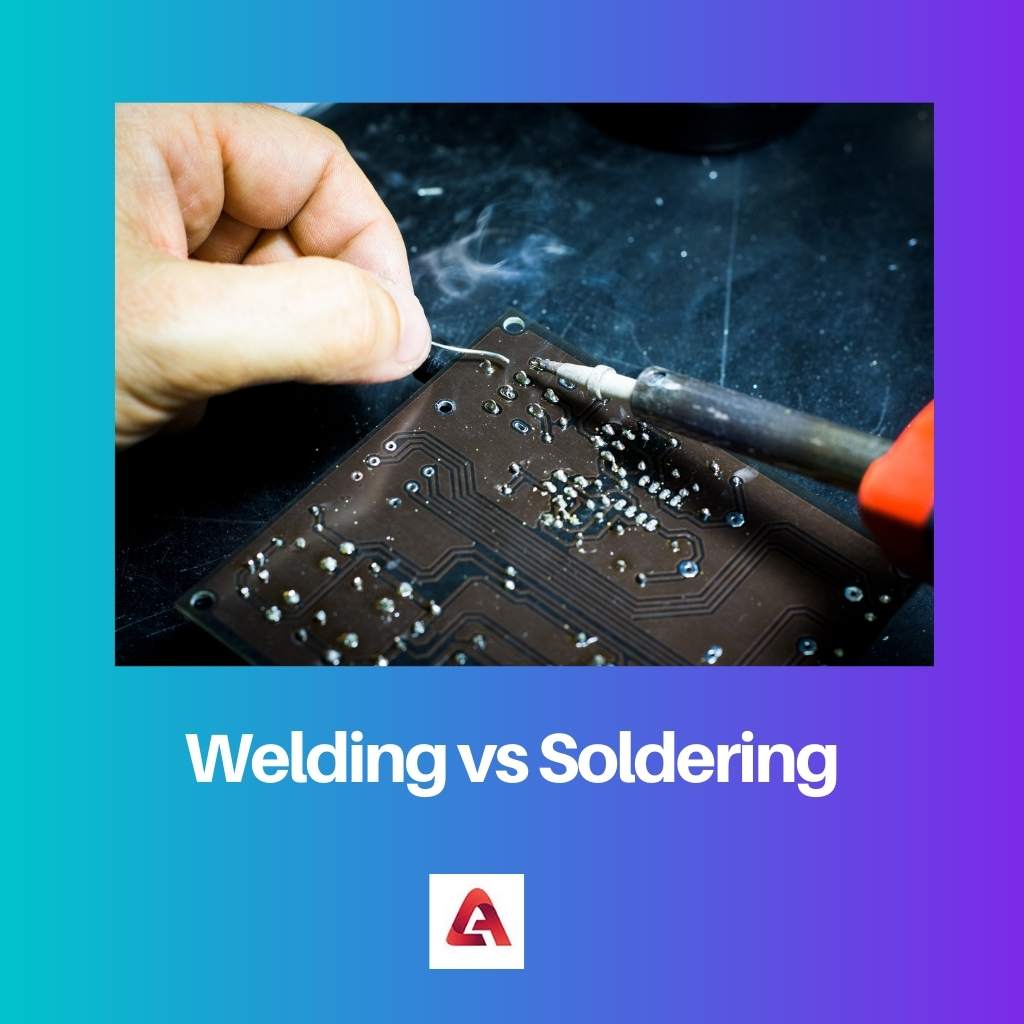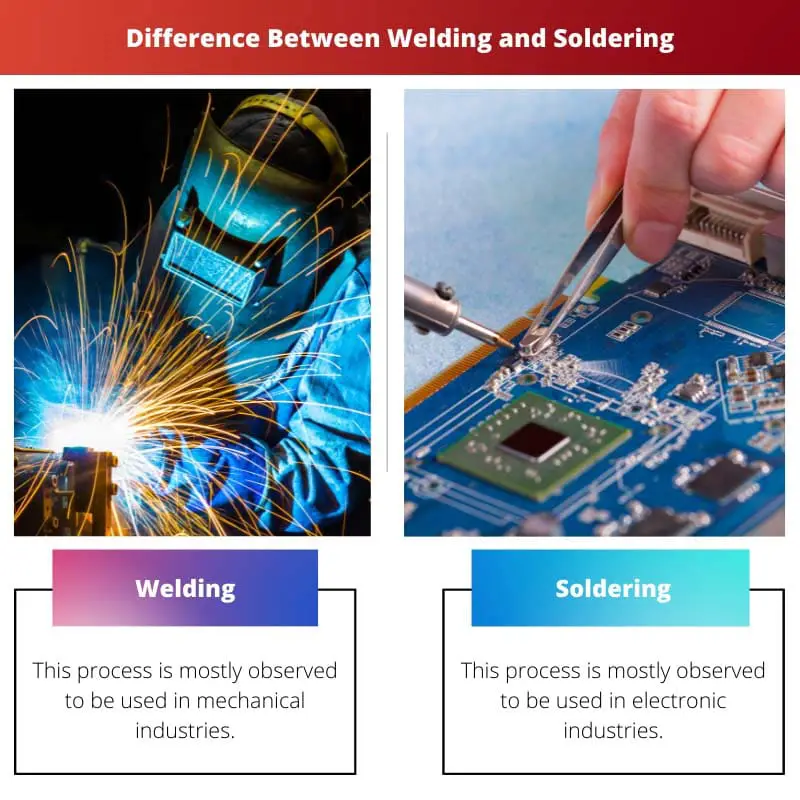There are many methods when it comes to joining various kinds of metals and processing them. This process includes many known and unknown methods, which are very essential and must be well understood by people.
Two such methods are welding and soldering. Although both do the same work, they have vast differences.
Key Takeaways
- Welding is a process of joining two metals by heating them to a high temperature and melting them together, while soldering is joining two metals by heating them to a lower temperature and using a filler metal.
- Welding produces a stronger bond and is used for larger and thicker materials, while soldering is used for smaller and more delicate materials.
- Welding requires more skill and expertise than soldering, and it involves a higher risk of injury or damage to the materials.
Welding vs Soldering
In welding, two metals are heated together at high temperatures, and then they are combined to produce a stronger bond necessary for the thickness of an object. Soldering involves heating two metals at low temperatures and adding another metal in it as a filler. This process is used for light things.

The process which is used for creating a really strong bond between any two metals is known as welding. The piece of metals that have been joined will be Resistant to any strain or stress. This practice is mostly seen in the automobile industry.
Pieces of metals being the same, heated with high temperature, etc., are some features necessary for welding.
The process of soldering does relate a lot to welding, but it has Its features too. First, it is a process used for not only connecting two metals but also two kinds of electronic components together.
The machine of solder is available in tubes or the shape of a pipe. Setting low temperatures and availability of flux are some necessities of soldering.
Comparison Table
| Parameters of Comparison | Welding | Soldering |
|---|---|---|
| Use | This process is mostly observed to be used in mechanical industries. | This process is mostly observed to be used in electronic industries. |
| Temperature | The temperature of welding is set higher than the melting temperature. | The temperature of welding is set lower than the melting temperature. |
| Type of joint | This process helps the metals to become strong mechanical joint. | This process helps the metals become strong electronic joint. |
| Use of filler | There is no compulsion for using filler metal in this process. | There is a compulsion for using filler metal in this process. |
| Properties of metals | There occurs a change in the properties of metals. | There does not occur any changes of properties in metals. |
What is Welding?
When there is a process of welding between two metals, those two metals have to be of the same type, welding cannot take place when there are two different metals. For example, stainless steel cannot be welded with brass.
The welding process is basically a process that allows to join of two metals by heating and setting them to a temperature that allows them to melt.
The welding process is done in such a way that a machine is heated to a high temperature, which helps create a molten metal that helps to join two metals together.
Sometimes, a weld pool is made by using a filler metal which helps the metal to join even stronger and more durable.
When two metals are welded, they are even stronger than wherein their original form before the welding process took place.
At the same time, if the process of welding was not carried out properly, then it would have affected the properties and characteristics of metal by weakening it. A worker putting more heat than required in metal is an example of wrong welding taking place.

What is Soldering?
The process of soldering is very close to that of the process of brazing. In the process of soldering, two metals join with a low set temperature instead of a high temperature. In this process, sometimes fillers are also used.
When a melting part cools down on its own mixes and joins into a metal.
When two metals are joined through the process of soldering, they are not as strong as their original version before they were soldered. There are many varieties of how metals can go through this process, namely soft soldering, silver coating soldering, etc.
These different types of soldering processes include having their own characteristics.
The process of soldering is also used to help clean the metals and give them their characteristics and features. It enhances their mental properties.
This process is commonly used for repairing and plumbing and making jewellery.
This process doesn’t make the metal strong but does help to join the metals properly.

Main Differences Between Welding and Soldering (With Table)
- The process of welding is mostly observed to be used in mechanical industries, and on the other hand, the process of soldering is mostly observed to be used in Electronic industries.
- In the process of welding, the temperature of welding is set higher than the melting temperature, and on the other hand, in the process of soldering, the temperature for soldering is set lower than the melting temperature.
- The welding process helps the metals to become strong mechanical joints; on the other hand, the soldering process helps the metals to become strong electronic joints.
- There is no compulsion to use filler metal in the welding process, and on the other hand, there is a necessity to use filler metal in the process of soldering.
- When two metals go through the process of welding, there is a change in their properties of those metals, and on the other hand, when two metals go through the process of soldering, there is no change observed in the properties of those metals.




